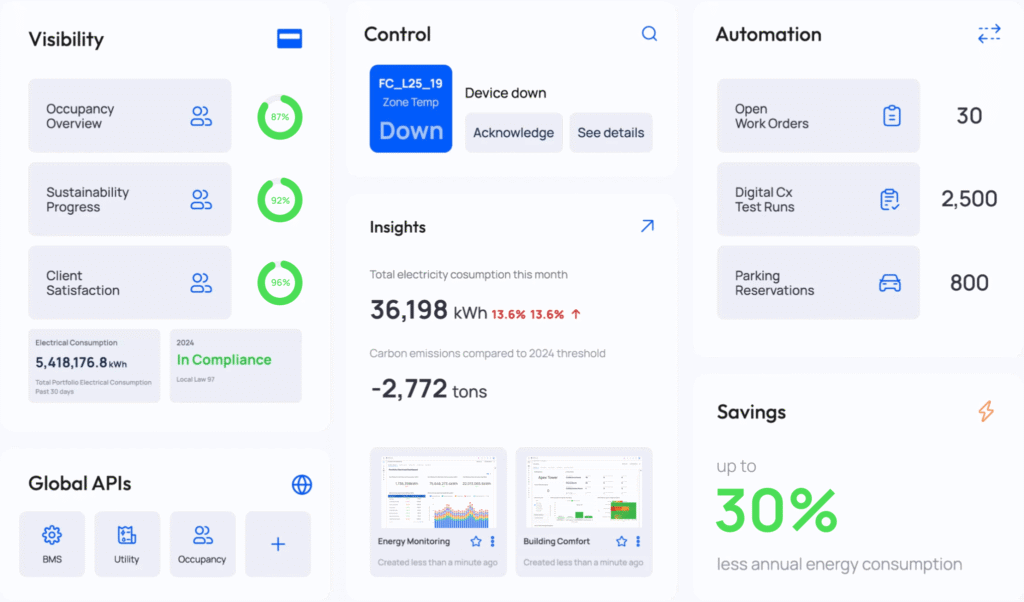As featured in MIT Horizon.
Who did it
KODE Labs, a smart-building software provider.
What they did
Built a software platform with the ability to integrate more than 150 different building management systems, hardwares, and softwares, allowing users to control and automate building operations—a task that has historically required interacting with a number of separate vendors—from one digital platform.
Machine learning1 algorithms embedded in KODE’s platform automate features like turning on lighting depending on time of day, changing room temperature based on weather, or setting a security system based on occupancy information. KODE can also use AI to predict when preventative maintenance may be needed or find the root cause of a fault in building software.
KODE’s goal is to eliminate some of the manual tasks that make up managing a building, Edi Demaj, one of the company’s co-founders, tells MIT Horizon. “In order to get to this idea of true, smart, and efficient buildings, we believe that you have to understand and account for all the data inside the building,” Demaj says. “You want to make sure that the people that live, work, and play in these buildings are comfortable and enjoy being in these buildings, while driving these different operational and energy savings.”
“The only way to do that is to be able to integrate all data systems—including IoT, including core building systems, including different softwares and hardwares that are used within the built environment to operate,” he adds.
How it helped
Building operations generally require a variety of different vendors for controlling systems like HVAC, lighting, security access, and elevators, says Demaj. That becomes even more convoluted within a large real estate portfolio; building owners will often have several locations and they may be mixed use, with residential and commercial tenants. KODE’s platform allows owners to consolidate all of that data into one platform. “Across the entire portfolio, every building looks the same, every building can be operated the same,” Demaj says.
Streamlining operations is integral in an industry where the average age of a building maintenance engineer is over 55, according to Demaj. The old way of operating buildings—physically and manually—is aging out with those workers. “We believe that the future of building operations is more via data scientists [and] data engineers, than it is pure traditional building engineers,” he says.
KODE says all of its clients have seen a return on investment within a year of integrating their platform, saving anywhere from 10 to 30% on energy costs and cutting operational costs in half, in part because of the reduced need for different softwares.
The company has partnered with huge organizations, including auto giant Ford and the U.S. General Services Administration, a significant manager of federal buildings.
Why AI and IoT
Internet of things (IoT) sensors can communicate via the cloud2. For KODE, sensors log data on operations like energy use, temperature, and motion in certain parts of a building and share that information to a unified software platform. That data provides fodder for the company’s AI algorithms, which drive actionable insights on how to improve a building’s functionality and efficiency.
For more on how IoT systems use motion and geographic sensors, see How IoT Works.
“Across the entire portfolio, every building looks the same, every building can be operated the same” — Edi Demaj, KODE co-founder
1 A subfield of artificial intelligence involving systems that can be trained to interpret or extrapolate from data without depending on explicit, preprogrammed rules.
2 Any network of computing resources (i.e., servers that store data and computers that process it) that can be used remotely.



